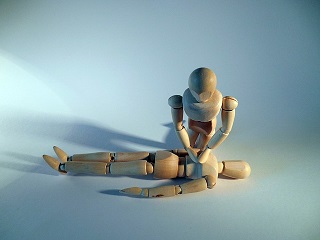In terms of a medical emergency, BLS (which stands for Basic Life Support) typically involves care that falls outside the scope of something one would learn in a general CPR course.
This might include things like administering oxygen, team approach, and in-hospital procedures.
In the context of a healthcare certification class, a course noted as “BLS” is usually indicative that it’s geared more toward professional rescuers, like nurses, paramedics and lifeguards, as opposed to those seeking general CPR knowledge.
There are a variety of different ways one can become certified in either BLS or CPR, with the former being available through local community organized classes.
BLS - Basic Life Support
There are several concepts covered in BLS classes and certifications which are typically required for professional rescuers, including those that address certain unique situations such as pre-hospital and in-hospital care. The core curriculum covered in most BLS classes includes, but is not limited to the following:
- BLS Algorithms for infants, children and adults
- Choking for all ages
- Ventilation techniques
- Effective resuscitation procedures
- Use of an automatic external defibrillator
- Team Dynamics
Everyday First Aid for someone who's unresponsive and nonbreathing. This is a video of CIPFP Ciutat de l'Aprenent, a VET (Vocational Education Technician) centre in Valencia (Spain). It has been created by EMT (Emergency Medical Technician) students of the 1st year, 31Ñ group, the year 2017-2018. Teachers: Mª Mercedes Martínez & Carmen Súarez. Co-coordinator: Alicia Sánchez
CPR - Cardiopulmonary Resuscitation
CPR coursework for the layperson, or non-professional rescuer, covers a broad range of basic life-saving procedures. It typically covers the following basic details:
- First aid basics
- Injury and environmental emergencies
- Preventing illness and injury
- Adult and child choking procedures
- Basic adult and child CPR and AED use